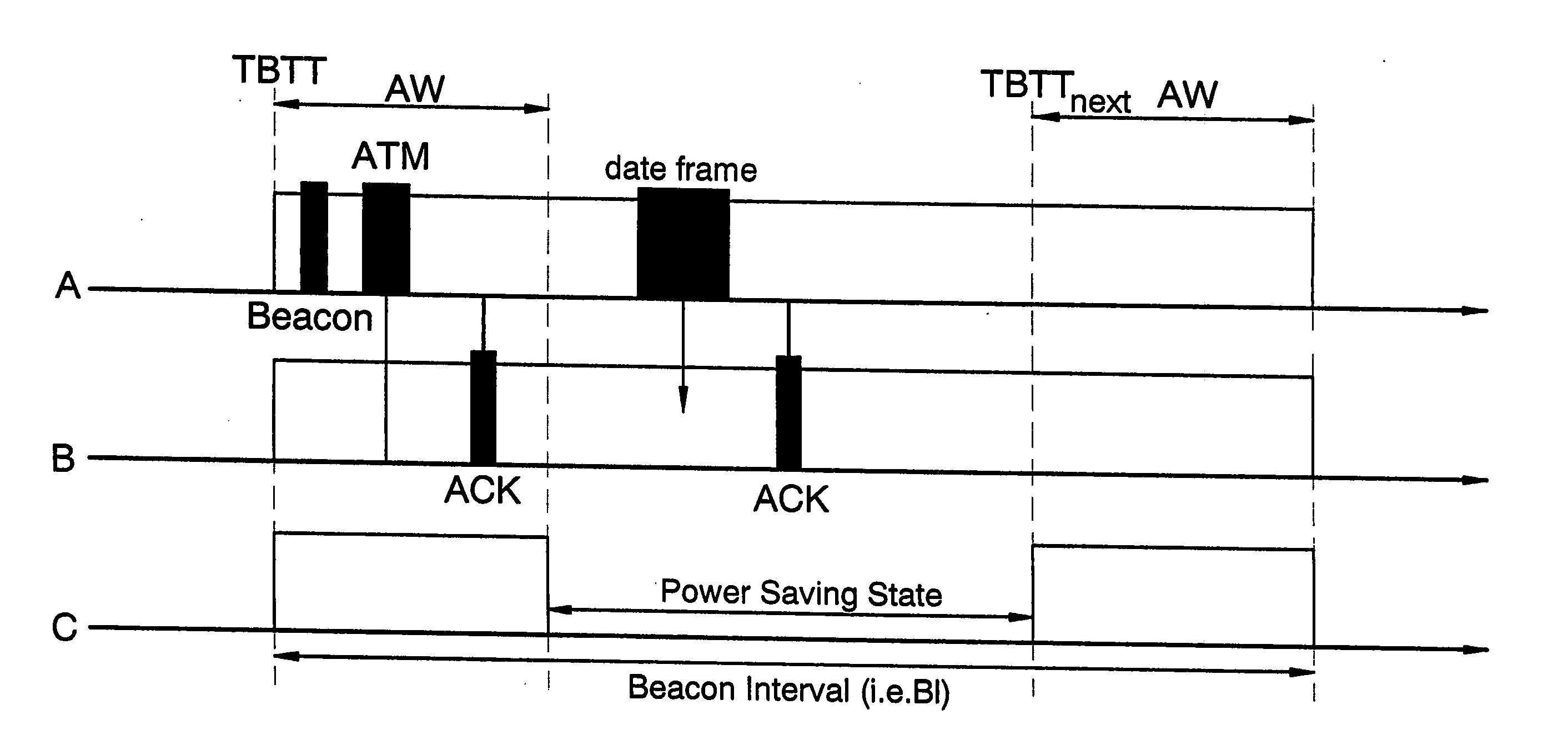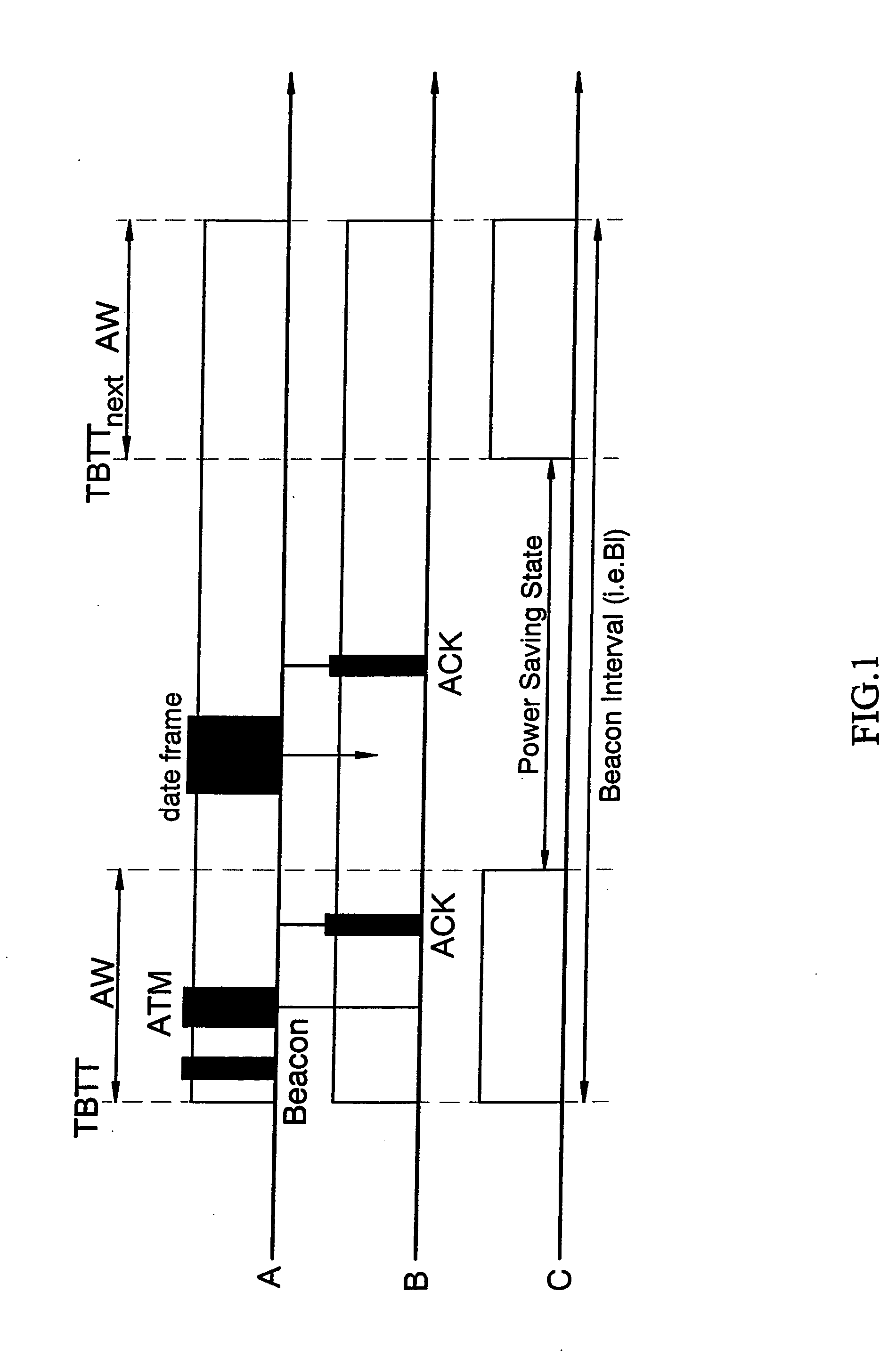Energy efficient medium access control protocol for IEEE 802.11 WLANs
a technology of access control and ieeee 802 . 11 wlans, applied in the field of energy efficient medium access control protocol, can solve the problems of csma/ca wasting scarce energy and bandwidth, affecting the power consumption and throughput of the network, and extending the frame delay, so as to achieve maximum data throughput, reduce energy consumption, and reduce the effect of energy consumption
- Summary
- Abstract
- Description
- Claims
- Application Information
AI Technical Summary
Benefits of technology
Problems solved by technology
Method used
Image
Examples
Embodiment Construction
[0019] In the network, all nodes are fully connected and time synchronization, so that all PS nodes wake up at almost the same TBTT (Target Beacon Transmission Time) at each beacon interval. At each TBTT, each node contends to send a beacon for time synchronization with each other and wakes up for the rest of the ATIM window. If a node with buffering unicast frames to PS nodes, it will send an ATIM frame to the PS nodes within the ATIM window period. On receiving the ATIM frame, the PS node responses an ATIM ACK and both the sender and receiver will keep awake for the whole beacon interval. After the end of ATIM window, all nodes follow the normal DCF access procedure to transmit their data frame. To let PS nodes with higher priority, only beacon, ACK, RTS, and ATIM frame can be send in the ATIM window.
[0020]FIG. 1 illustrates an operating example of the IEEE 802.11 power management scheme. Initially, node A, B and C wake up at the beginning of beacon interval. If node C receives n...
PUM
 Login to View More
Login to View More Abstract
Description
Claims
Application Information
 Login to View More
Login to View More - R&D
- Intellectual Property
- Life Sciences
- Materials
- Tech Scout
- Unparalleled Data Quality
- Higher Quality Content
- 60% Fewer Hallucinations
Browse by: Latest US Patents, China's latest patents, Technical Efficacy Thesaurus, Application Domain, Technology Topic, Popular Technical Reports.
© 2025 PatSnap. All rights reserved.Legal|Privacy policy|Modern Slavery Act Transparency Statement|Sitemap|About US| Contact US: help@patsnap.com



